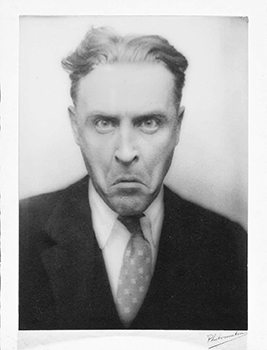

Fitzgerald and the young Baltimore-based writer, and later actor, Robert Spafford (1913–2000) collaborated on the movie treatment “Gracie at Sea” after Fitzgerald met George Burns and Gracie Allen in Baltimore in 1934, when they were on tour.
The scenario, or screenplay synopsis, is a short story in form, thoroughly characterized and thought out. “Gracie at Sea” tries hard to be the sort of farce that Burns and Allen were already becoming known for—that is to say, with Burns the straight man, and Allen the “dumb Dora”—but Fitzgerald couldn’t keep himself from real fiction writing. When George is described in the first paragraph as “a fundamentally lonesome and self-obliterating man,” it’s clear this isn’t just a cinematic “vehicle which will carry [Burns and Allen’s] stuff[.]”
Fitzgerald was upset that he’d spent the time on a screenplay that did not sell. He wrote to his cousin Ceci Taylor, late in the summer of 1934: “Everything here goes rather badly. Zelda no better—your correspondent in rotten health + two movie ventures gone to pot—one for Gracie Allen + Geo. Burns that damn near went over + took 2 wks’ work + they liked + wanted to buy—+ Paramount stepped on. It’s like a tailor left with a made-to-order suit—no one to sell it to.” When he was based in Hollywood at the end of the decade, Fitzgerald revised this screenplay synopsis one more time for a potential new cast. His revision is included in the explanatory notes to this story.
